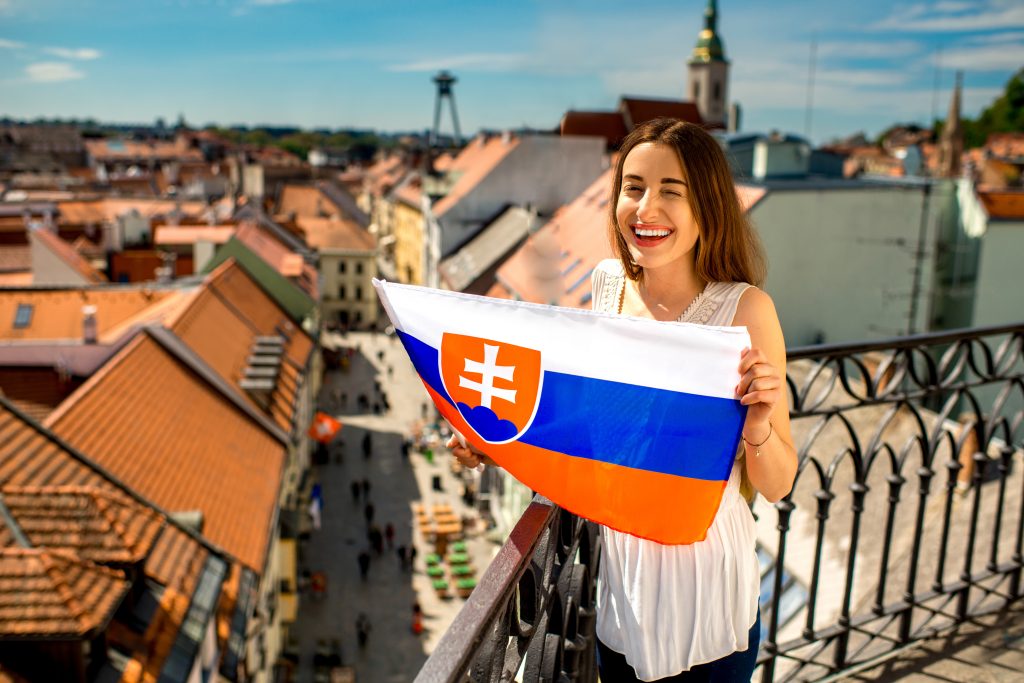Recently, I ran into a friend of mine who is from Slovakia and I asked her what her favorite thing about Slovak is. She talked about what she called, “Sweet Names”. This is called a diminutive when someone changes the ending of a name to something that sounds cuter. For example, my name Laura would become Laurichka. One can use this when talking to someone they are close to or a child. It is like a nickname but shows more about the close relationship between two people, much like using a term of endearment.
I then decided to dig a little deeper into the Slovak language.
The Slovak language is the official language of the Slovak Republic. Slovak is spoken by 4.5 million inhabitants of Slovakia, more than one million emigrants in the United States, and approximately 300,000 people in the Czech Republic. Linguistic, historical, and archaeological sources prove that Slovak developed directly from Proto-Slavic (without passing through a Proto-Czechoslovak stage of development). Although it was first written in the Latin alphabet, Constantine developed a special alphabet called the Glagolitic alphabet, based on the Greek minuscule, and used it for the translation of the Gospel and the Byzantine Book of Laws to Old Church Slavonic. The brothers obtained permission for the use of the new letters as a liturgical language (“lingua quarta”) from Pope Hadrianus II. Because of this, Slovak became the fourth language allowed to be used in Christian services.
The new alphabet created by Constantine is what started the creation of the Cyrillic alphabet which is now used in many Eastern European languages including Ukrainian, Russian, and more. However, Slovak changed from the Cyrillic alphabet and now is written in a modified Latin script including the four diacritics (ˇ, ´, ¨, ˆ).
The Slovak language went through rapid development in the 10th to 12th centuries, and it stabilized between the 13th and the 15th centuries. In the 16th to 18th centuries, Czech was used as the literary language of the educated in Slovakia, together with several types of cultural Slovak, including cultural West Slovak, cultural Central Slovak, and cultural East Slovak. The end of the 18th century saw the first attempts to form a Slovak literary language.
On 1 May 2004, Slovak became one of the official languages of the European Union.
In terms of the language itself, Slovak has a simpler declension and conjugation structure than languages like Russian or Czech. The Slovak language has six grammatical cases (nominative, genitive, dative, accusative, locative, and instrumental). The vocative is not as active in Slovak as in Czech; it is usually identical to the nominative. Slovak nouns have one of three grammatical genders: masculine, feminine, and neuter. Three tenses are used in the conjugation of verbs: past, present, and future. In addition, verbs can be used with three moods – indicative, imperative, and conditional. Most Slovak verbs distinguish between two aspects – perfective (zavolať) and imperfective (volať). Slovak is a highly inflectional language with analytic elements; the inflection of a word marks its grammatical function. Therefore the word order in a sentence is relatively free and can be used to add semantic distinctions. In the syntactic typology, Slovak is characterized by a basic construction scheme S(ubject) – V(erb) – O(bject). In the Slovak language, two-member sentences with a subject (agents) are the most frequent, but one-member sentences without an agent are also frequently used (Prší, Zabilo ho v hore, Striaslo ho).
While the Slovak-speaking population is small, it is a beautiful and historic language that has helped shape our world and other languages to how they are today. Listen to an example of the language with a song from popular Slovakian pop singer Vanesa Horakova.
To read more about the fascinating history of Slovak, see our sources below:

